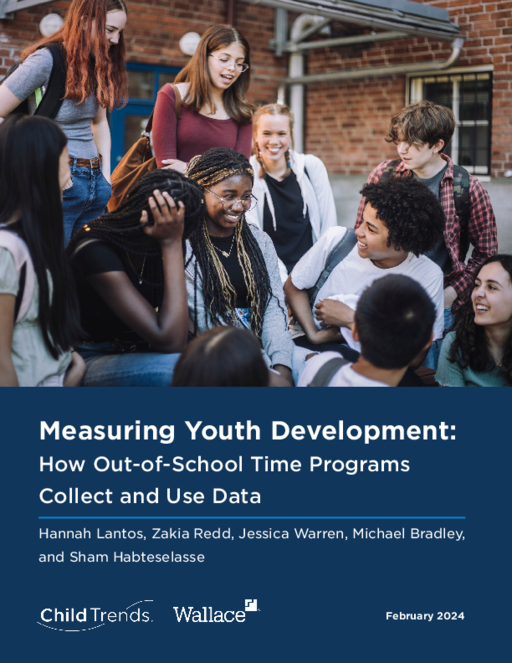- Author(s)
- Hannah Lantos, Zakia Redd, Jessica Warren, Michael Bradley, and Sham Habteselasse
- Publisher(s)
- Child Trends
- DOI Link
- https://doi.org/10.56417/3703u3452e
Research Approach
The authors reviewed research about measuring the work and impact of afterschool, summer, and other out-of-school-time (OST) programs. They found 283 studies on the subject. In 2021, they then surveyed and interviewed staffers largely from OST programs that experts highly regard. This provided information from a diverse set of 38 programs. These programs cover interests ranging from the arts to workforce development.
The study was designed to answer three research questions:
- What is the range of intended outcomes for children and youth attending OST programs, including, but not limited to, programs that focus on the arts, civic engagement and social justice, career and workforce development, and general or other services?
- What are the different measurement approaches and instruments used to document OST program outcomes, including formative measures (i.e., assessment that takes during the course of the program) and summative measures (i.e., assessment that takes place at the end of the program)?
- What are the gaps in and barriers to documentation and measurement, where intended outcomes are either not measured or are not articulated because of a lack of a measurement strategy, skills, resources, or instruments?
The researchers set out to find a sample of OST programs with the intention of conducting surveys and in-depth interviews with the programs’ staff members to understand the outcomes they prioritize, how they measure those outcomes, the barriers to successful measurement, and the complex decisions they must make regarding the selection and measurement of outcomes.
The final sample of 38 programs was based in large part on recommendations from 20 field experts about programs they considered strong. The researchers conducted in-depth interviews with 28 of them and surveyed 12 members of this group. The research also involved surveys of staff members at another group of 10 programs in part to cover content areas that were not represented in the expert recommendations. The programs included arts, career and workforce, civic engagement and social justice, and social-emotional learning efforts. Summer camps, online programs, programs serving youth in the juvenile justice system, and programs for young school-aged children were all part of the mix. Interviews were conducted in 2021.

